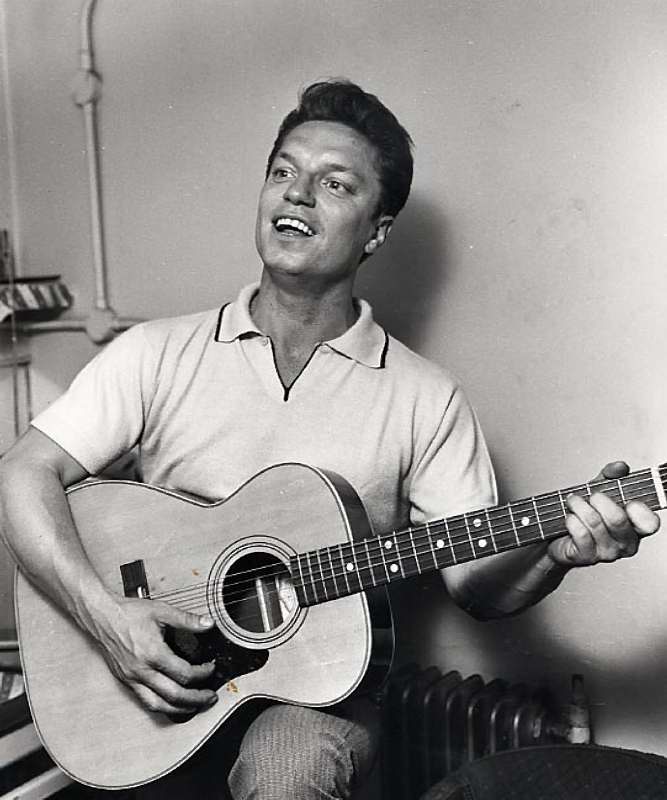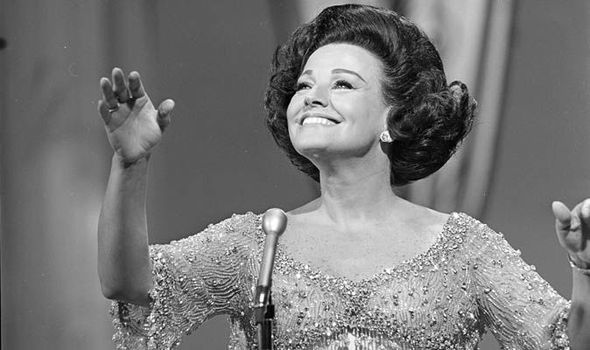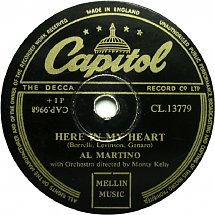My third randomly selected #2 for the week brings us all the way back to the early weeks of 1954. Before Elvis, before the Beatles, before colour TV and motorways, there was Guy Mitchell…
‘Cloud Lucky Seven’, by Guy Mitchell
#2 for 1 week – 12th – 19th February 1954, behind ‘Oh Mein Papa’
I have a huge soft-spot for Guy Mitchell. Not only did he have a hunky, all-American boy next door vibe going on – see the pic above! – but during the early months of this blog, as I trawled through many overwrought and overblown, and often quite dull, pre-rock #1s, Mr. Mitchell would regularly pop up with something a bit more sprightly.
‘Cloud Lucky Seven’ came right in the middle of Mitchell’s four chart-topping singles, and is a pre-rock hit by-numbers. It’s almost unbearably jaunty, the backing singers sound like drunken relatives at a wedding, and there are horns. Boy, are there horns… It’s a bit jazz, a bit swing, very music-hall, and with no hint at the rock ‘n’ roll revolution that’s just around the corner.
What saves it from sounding ridiculous to modern ears is Guy himself. He isn’t, to be honest, the best technical singer. He’s no Al Martino, or Eddie Fisher, but his voice has a throaty, homely charm. He sounds like he’s having fun, as if he’s well-aware that he’s singing a load of tosh (see also ‘She Wears Red Feathers’) and being paid handsomely to do so.
Lyrically, the song is about love as clouds (that’s another pre-rock trick: love as birds chirping, fluffy clouds, twinkly stars…) Cloud one is where you land when you meet that special someone, while cloud lucky seven is the cloud nearest heaven… Which means… This is actually a song about getting laid?? Those pre-rockers were just as horny as those that came later, they just had to hide it behind bizarre metaphors involving clouds. Which means, as he belts out that there’s one more cloud to go…! it’s not only the best bit of the song; but you can almost hear the knowing wink. Guy, you sly dog, you!
Two more #2s to come…











